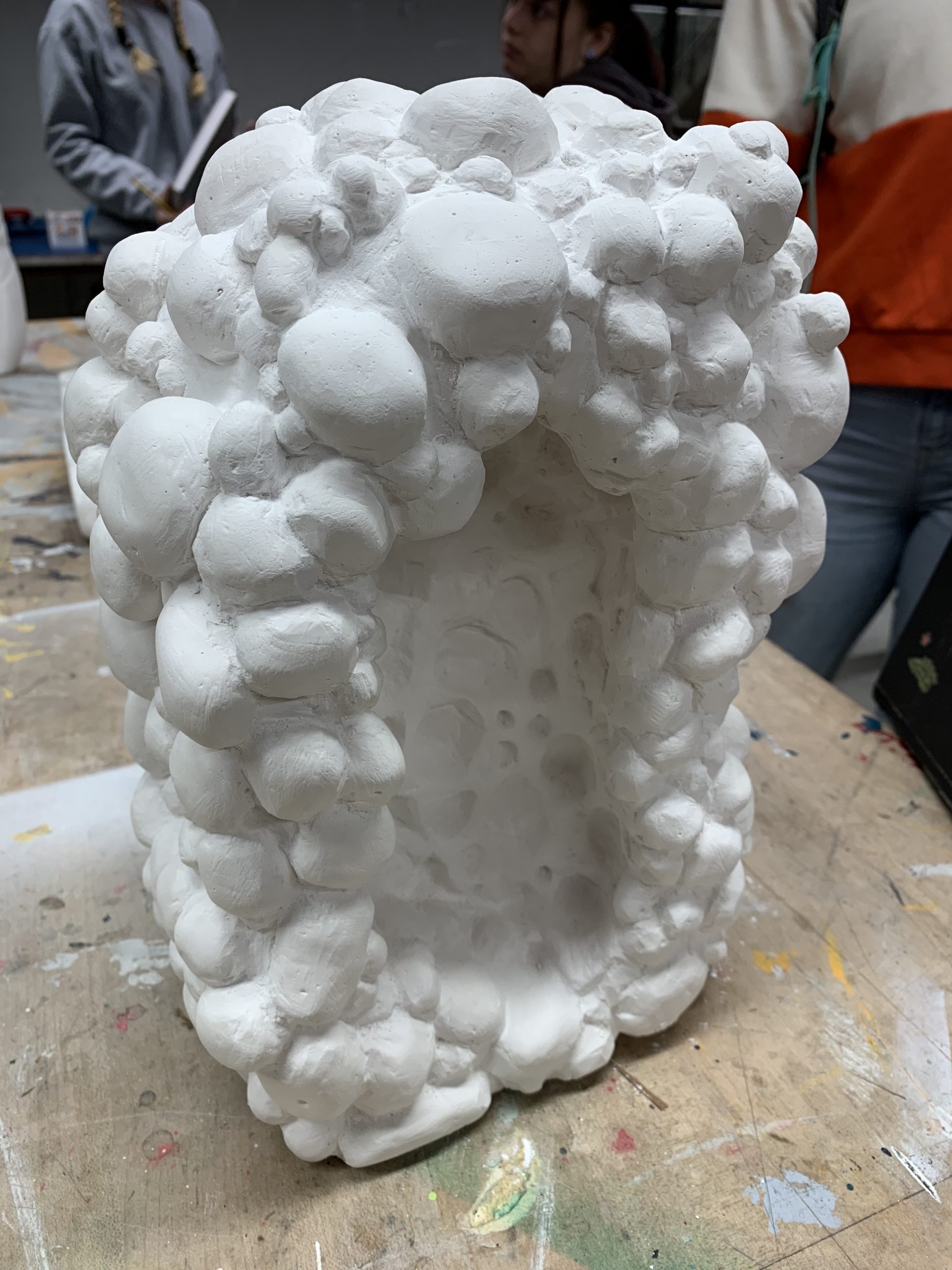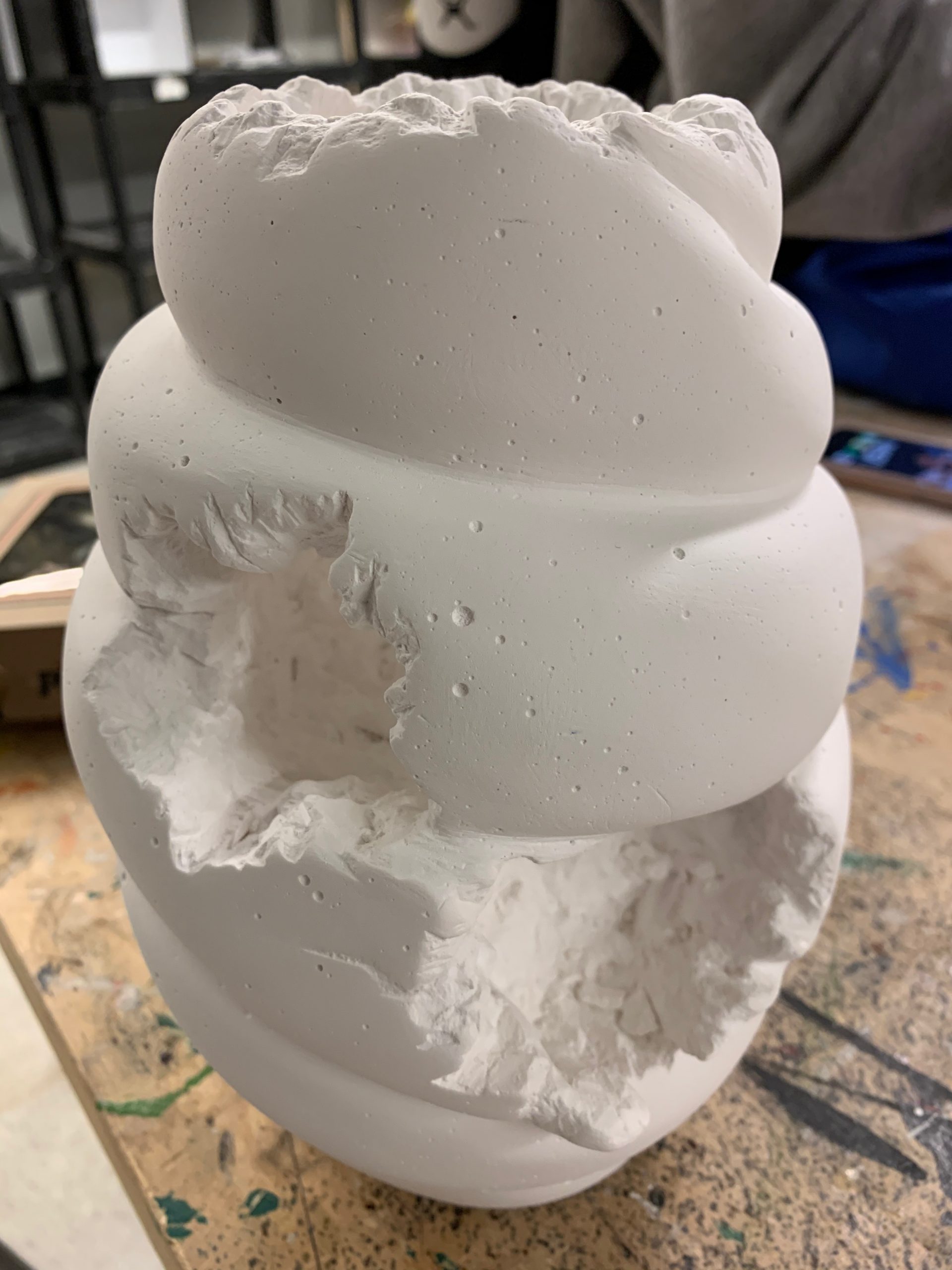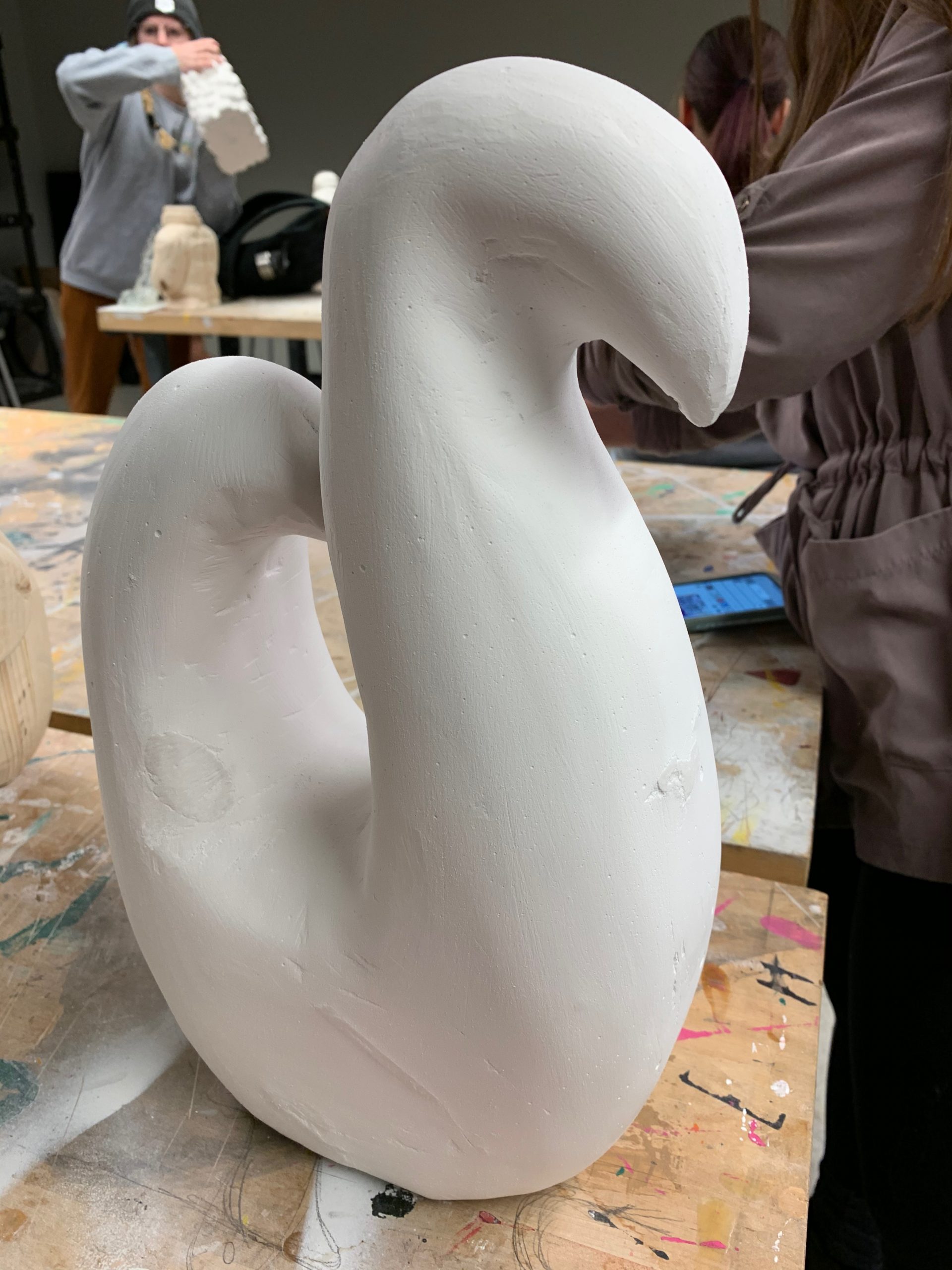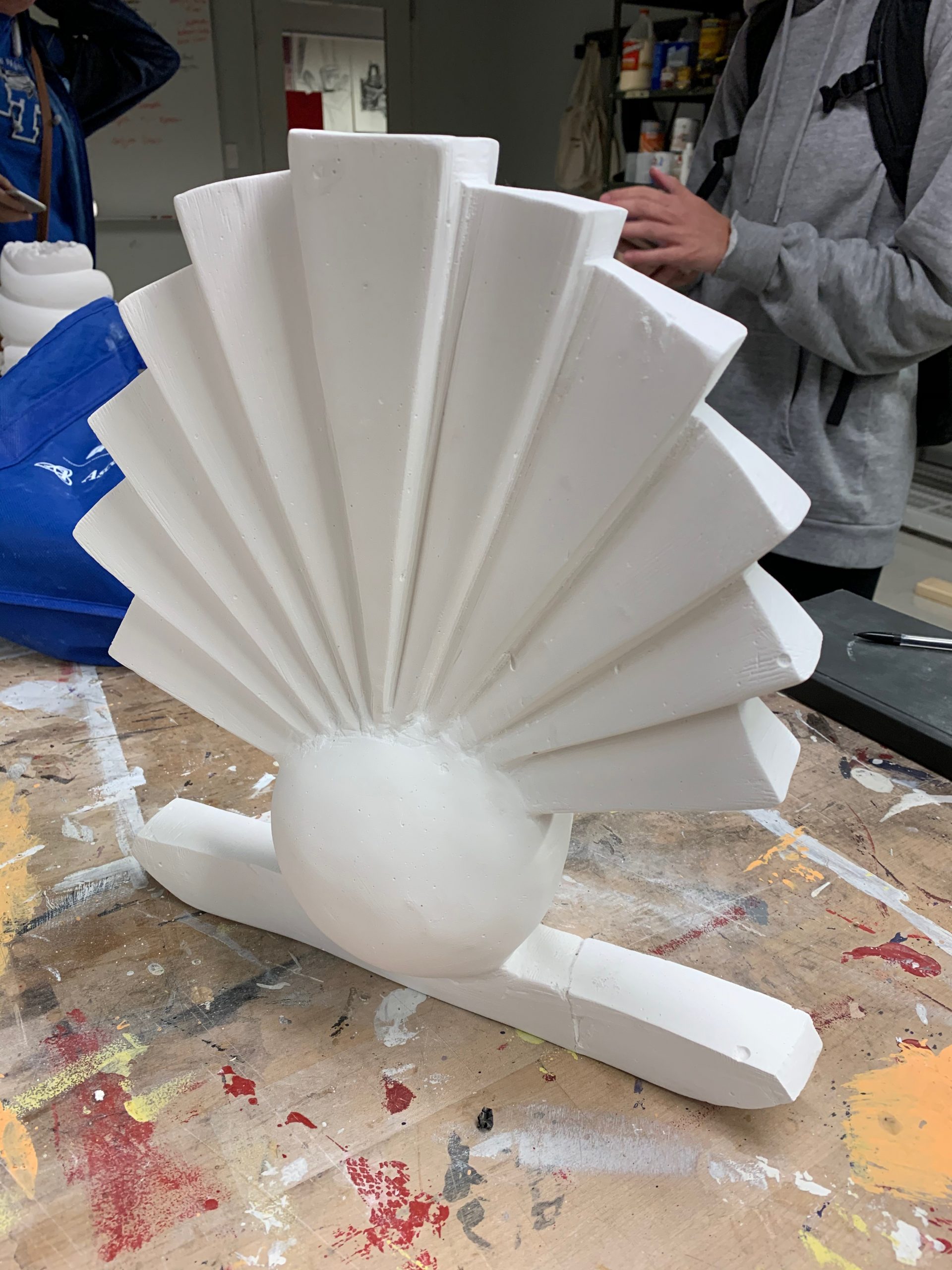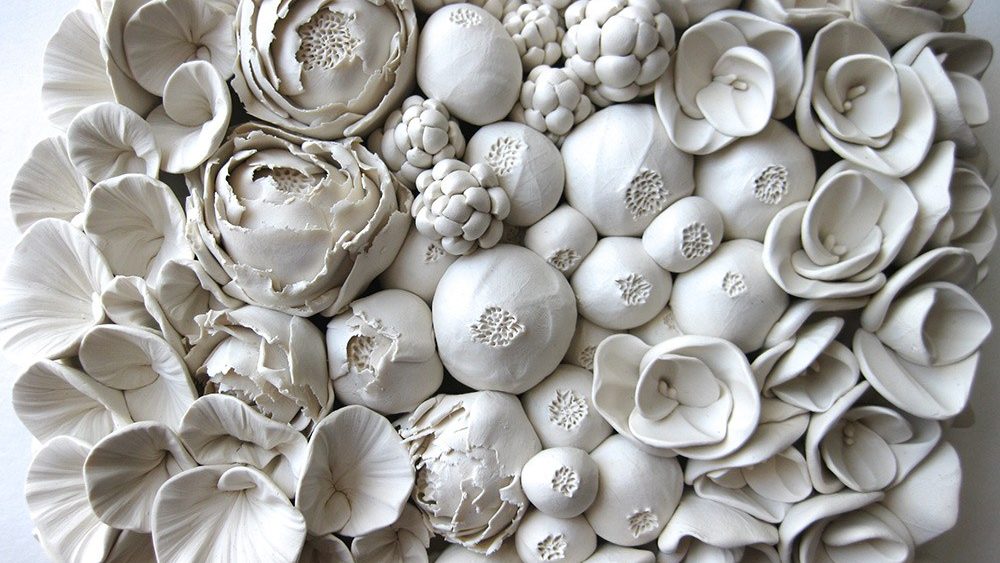
Learning Objectives
- Demonstrate an understanding of the visual elements and principles of design.
- Demonstrate an understanding of additive and subtractive sculpture processes.
- Demonstrate an understanding of texture, harmony and contrast.
Project Overview / Considerations
For this project we will be creating a plaster sculpture that explores texture and value. Plaster is a powder that when mixed with water undergoes a chemical reaction. After a few minutes the plaster and water mixture hardens into a white, chalky material that can be carved and sanded. For this project you will create a plaster sculpture that is at least 12″ by 6″ and embodies two of the texture based words from the chart below.
Rubric
Terms
- Plaster – a soft mixture of lime with sand or cement and water for spreading on walls, ceilings, or other structures to form a smooth hard surface when dried.
- Additive – Is the process by which material is shaped and built up, frequently on an armature, to create the desired image.
- Modelling – An additive process in which material is steadily built up to produce the finished figure.
- Subtractive – Involves removing material, as in wood carving or stone sculpture, to create a finished work.
Materials
- One box or bag of Plaster of Paris (provided)
- Old metal butter knives
- Dental tools or clay tools (some provided)
- Box for casting (shoe box or larger – heavy cardboard) – at least 12″ by 10″
- Glue gun and glue sticks (may want to bring your own glue gun)
- Small wire brush (provided)
- Old rags or t shirts
- 5 gallon bucket (provided)
- Dry wall sand paper mesh (provided)
- Rasp (provided)
Part 1 – Sketchbook Research – Plaster Texture
Name these slides Project – Plaster Texture in your Google Slides Presentation.
- Create a grid of 12 squares (3 squares by 4 squares). Fill each square with a different type of texture. Draw these from real life objects. Touch them. Don’t look at flat pictures as you won’t be able to see how light can affect the texture. Slow down and spend time with the textures you are drawing. Examples images are below.
- Watch the videos under the Research section and take notes in your sketchbook.
- In class you will get to choose your two words, but you won’t know what you are going to get. Once you have your two words, sketch out ways to combine the two different textures into one object. You might have the inside of the object be smooth while the outside is rough or you might juxtapose two different textures or let them merge into something else entirely.
- Create at least 5 sketches of your proposed plaster carving that incorporates the 2 words you’ve chosen. What happens if you change the scale or texture? Think about how you will be using the elements and principles before you start.


Some possible words we will choose from in class.
| A | B |
| embossed | cushioned |
| crocheted | flaky |
| flawed | bumpy |
| gelatinous | furry |
| icy | jagged |
| limp | patterned |
| pointy | pierced |
| sharp | swollen |
| viscous | wooden |
| holey | thorny |
| silky | scraped |
| pocked | pleated |
| ornamented | mosaic |
| knitted | knobbed |
| grainy | feathery |
Part 2 – Project – Plaster Texture
Think about the entire form of the object and how the viewer will interact with it. What will they notice first, second? Will there be an area that is very delicate and another that is very aggressive. How will you allow these two areas to play off of each other? How will light contribute to the work? Will you be able to see through it? What precautions should you take as you work – plaster is extremely fragile.
- Selecting and Sketching Ideas
Begin by carefully choosing your texture words and creating five detailed sketches that explore your concepts. These sketches will serve as your blueprint for the plaster carving process. - Casting the Plaster
Once your sketches are ready, proceed to cast the plaster using the techniques demonstrated in class. Be sure to follow all steps closely, including proper mixing ratios and container preparation, to avoid air bubbles or weak spots. If anything is unclear, refer to the instructional videos or ask questions for clarification. - Carving the Plaster
After removing the plaster from its mold, immediately begin carving. Timing is crucial, as the plaster’s properties change as it cures:- Initial Stage: Shortly after mixing, the plaster will start to warm and set. At this point, it is relatively soft and ideal for carving large portions or roughing out major shapes.
- Intermediate Stage: As the plaster hardens, it becomes more difficult to remove material. Use smaller tools and switch to more refined carving techniques for detailing.
- Final Stage: When fully dry, the plaster becomes white and no longer feels cool to the touch. At this stage, carving is challenging, but the surface can be sanded to achieve a smooth, polished finish. Note: Sanding at this stage allows you to refine textures and remove minor imperfections.
- Important Tips
- Work efficiently during the soft stages to shape the plaster before it hardens.
- Plan your carving approach to minimize wasted time and effort.
- Avoid letting the plaster dry out completely if major material removal is still needed, as this will make carving significantly harder.
- When sanding, use progressively finer sandpaper to achieve a professional, smooth texture.
A note on cleaning up. Plaster is messy. Really messy. Do not ever, ever, ever allow plaster to go down the drain. It is like cement and will harden in the pipes. Use the waste bucket first to wash your tools and your hands. Once you are done using your carving tools, scrub them with a wire brush and water in the plaster waste bucket. Once they are clean rinse them with water and DRY them so they don’t rust.
Part 3 – Documentation – Plaster Texture
Photograph your finished sculptures and upload your images to your Google Slide Presentation. For more information on photographing three-dimensional works of art, check out the notes here (Documenting Your Work – located under Resources at the top).
Part 4 – Self-Reflection – Plaster Texture
- Which 2 words did you choose and how did you use them in your plaster work? How do your two words contrast each other in your work? How do they complement each other (work together) ?
- Which principles of design are most evident in your work? Which elements create those principles? How?
- What was most surprising about plaster? What was most frustrating?
- How does the texture of your piece inform the values (darks and lights) seen in your work?
